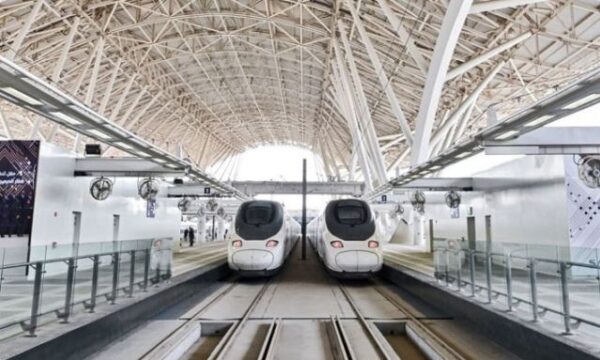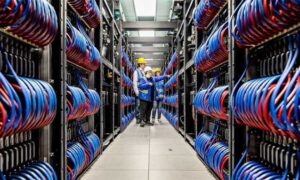Saudi Arabia, known for its vast deserts and rich cultural heritage, has made remarkable progress in enhancing its transportation infrastructure. One shining example is the Haramain High-Speed Train, an impressive feat of engineering that traverses the arid landscape, connecting major cities in the kingdom. This modern transportation marvel has not only transformed travel in Saudi Arabia but also showcases the nation’s commitment to innovation and sustainable development.
Haramain high-speed train will carry millions of pilgrims to Mecca
Connecting the Kingdom:
The Haramain High-Speed Train, also known as the “Haramain Express,” stretches over 453 kilometers (282 miles) and links the holy cities of Mecca and Medina with the coastal city of Jeddah. This ultra-modern railway system not only serves as a convenient mode of transportation for Hajj and Umrah pilgrims but also offers a comfortable and efficient travel option for both domestic and international travelers.
Engineering Marvel:
The construction of the Haramain High-Speed Train was a testament to the nation’s commitment to technological advancement. Built with cutting-edge engineering techniques, the railway line passes through some of the most challenging terrains, including the vast desert of Saudi Arabia. The train tracks were carefully laid to ensure stability and smooth operation, even in extreme weather conditions.
State-of-the-Art Infrastructure:
The stations along the Haramain High-Speed Train route are architectural gems that blend modern design with elements of traditional Saudi Arabian culture. Four major stations are situated in Mecca, Medina, Jeddah, and King Abdullah Economic City (KAEC). Each station is equipped with state-of-the-art facilities, including ticketing counters, waiting lounges, prayer areas, restaurants, and retail outlets, ensuring a comfortable experience for passengers.
Efficiency and Speed:
The Haramain High-Speed Train is built to travel at a staggering speed of 300 kilometers per hour (186 miles per hour), reducing travel time between Mecca and Medina to just two hours. Previously, this journey took around six hours by road. The high-speed train not only enhances connectivity but also reduces traffic congestion and contributes to the overall economic development of the region.
Sustainability and Environmental Impact:
The Haramain High-Speed Train embraces sustainable practices and has a minimal impact on the environment. The trains are powered by electricity, significantly reducing carbon emissions compared to conventional modes of transportation. This eco-friendly approach aligns with Saudi Arabia’s commitment to the United Nations’ Sustainable Development Goals and showcases the nation’s dedication to a greener future.
Boosting Tourism and Economic Growth:
The introduction of the Haramain High-Speed Train has had a positive impact on Saudi Arabia’s tourism sector and economic growth. The improved accessibility to the holy cities of Mecca and Medina has led to an increase in the number of religious pilgrims and tourists visiting the country. The train has also facilitated business travel and enhanced connections between the major cities, fostering trade and investment opportunities.
Conclusion:
The Haramain High-Speed Train stands as a remarkable symbol of Saudi Arabia’s commitment to progress, innovation, and sustainable development. With its advanced infrastructure, efficient operations, and contribution to economic growth, this modern railway system has transformed travel within the kingdom. As the train glides through the desert, it not only showcases the beauty of Saudi Arabia’s landscape but also serves as a testament to the nation’s vision of a connected and prosperous future.











